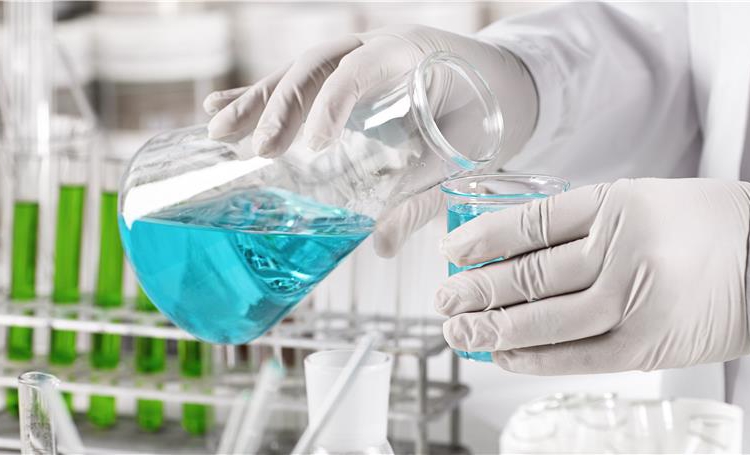Monomers

Monomers are small molecules, mostly organic, that can combine with other similar molecules to form very large molecules or polymers. All monomers have the capacity to form chemical bonds with at least two other monomer molecules.
BUTYL ACRYLATE (BA)
Butyl Acrylate is an acrylate monomer with the molecular formula CH2=CHCOO(CH2)3CH3. It is a clear and reasonably volatile liquid, sparingly soluble in water and completely soluble in alcohols, ethers, and almost all organic solvents. It is a highly flammable liquid with a flash point of around 40°C and has a distinctive fruity, pungent odour. It is easily miscible with other organic solvents and is easily polymerized with monomer molecules to form polymer chains.
Butyl acrylate is primarily used in the manufacture of homopolymers and copolymers for use in water-based industrial and architectural paints. It can also be used in cleaning products, antioxidant agents, enamels, adhesives, textiles, caulks and paper polishes. The double bond reactivity also allows this product to be used as a chemical mediator. The primary end-user markets for this product will be the water, plastics, leather, paint, adhesive and textile industries.
ETHYL ACRYLATE (EA)
Ethyl acrylate is an acrylate monomer with the molecular formula C5H8O2. It is a clear and volatile liquid, slightly soluble in water, completely soluble in alcohols, ethers and almost all organic solvents. It is a very flammable liquid with a flash point of 9°C (fire hazard grade 3) and has a pungent acrid odour. It is easily miscible with other organic solvents and is easily polymerized with other monomer molecules to form polymer chains.
Ethyl acrylate is mainly used in the production of emulsion-based polymers. Manufacturers produce acrylic resins that can then be used as paints, coatings or latex products. It is mainly used in polyacrylate elastomers, acrylic rubber, textile, acrylic fiber, leather products and prosthetic materials. It can be used as a coating for most household items such as books, magazines, frozen food packaging, fragrance additives, and as an adhesive for envelopes and labels. Primary end-user markets are the plastics, leather, paint, packaging, paper and textile industries.
METHYL ACRYLATE (MA)
Methyl Acrylate (also known as acrylic acid methyl ester and methyl 2-propenoate) is an acrylic acid ester and has the formula C4H6O2. It is a colorless, transparent liquid with an unpleasant odor. It is found in nature as the volatile component of pineapple. It is slightly soluble in water, but completely soluble in alcohols, esters and many other organic solvents.
Methyl acrylate is a chemical that can be used in a variety of industries as it readily reacts with a wide variety of organic and inorganic compounds. Therefore, it is a very useful chemical intermediate in various manufacturing processes.
One of the main areas where methyl acrylate is used is in the production of surface coatings. These surface and water-based coatings are found in a variety of industries and include the paint industry where Methyl acrylate can be a component of paints and varnishes. This is because methyl acrylate provides good water resistance, low temperature flexibility and sunlight resistance to products such as latex paint formulations.
The textile industry and leather industry also use methyl acrylate as a component of coatings. The leather industry uses it to provide different finishes; Its products are suede and nubuck, while the textile industry uses methyl acrylate in the manufacture and finishing of woven and non-woven textiles. The paper industry also uses methyl acrylate in paper coatings and in the manufacture of the paper itself.
Methyl acrylate is also used in the manufacture of consumer, technical and construction adhesives. It is also used in the manufacture of acrylic and modacrylic fibers and in the production of plastic films.
METHYL METHACRYLATE (MMA)
Methyl Methacrylate (also known as MMA, 2-methylmethacrylate or methyl 2-methyl propenoate) is an ester of methacrylic acid. It has the formula C5H8O2 and is a clear, colorless liquid with a pungent odor and is not known to occur naturally. It is insoluble in water, but soluble in most organic solvents and is also volatile and flammable in both liquid and vapor form.
MMA is polymerized to form lubricant viscosity modifiers, dispersions, molding/extrusion powder and coatings. These are then used in the manufacture of things like acrylic surface and paper coatings, adhesives, sealants, leather and paper coatings, inks, textile lacquers, latex paints, and lacquer and enamel resins.
MMA is also used in medicine and dentistry, as it is used to make prosthetic devices, surgical bone cements, and ceramic fillings or cements. It can also be used in the manufacture of orthotic shoe inserts and in leaded acrylic radiation shields.
styrene monomer (SM)
styrene. It is a colorless liquid with a sweet smell. Computer, film, packaging, countertops, medical equipment, synthetic rubber and Used in bathroom applications. It is also used in the production of expandable polystyrene (EPS), styrene butadiene latex (SBL), acrylonitrile-butadiene-styrene/terpolymer (ABS), unsaturated polyester resins (UPR), and styrene-butadiene rubber (SBR).
VINYL ACETATE MONOMER (VAM)
Vinyl acetate monomer (VAM) is an important intermediate used in the manufacture of a wide variety of resins and polymers for paints and coatings, adhesives, sealants, elastomers, textile finishes, paper coatings, binders, films and countless other products. It homopolymerizes efficiently to polyvinyl acetate (PVA) and VAM can be used in numerous random copolymers and terpolymers such as ethylene-vinyl acetate copolymers, vinyl-acrylic resins, vinyl acetate-acrylic acid copolymers, and vinyl acetate-vinyl chloride copolymers. With a wide variety of polymerization options, VAM has allowed the design of products with a wide range of cost and performance profiles.
